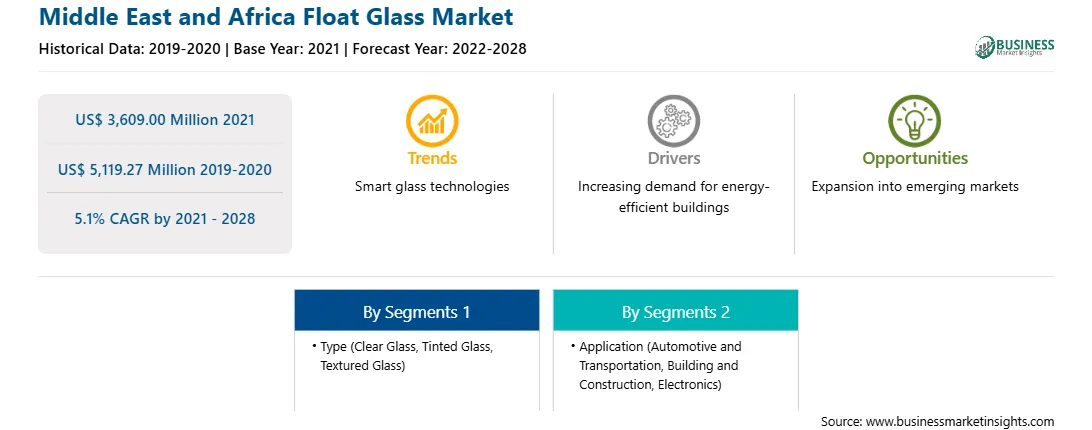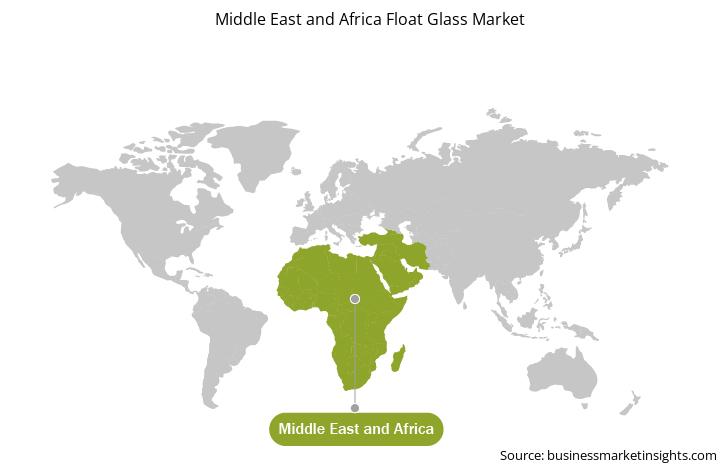In recent years, there have been various technological advancements. Also, there has been an increase in the trend of using float glass in the solar industry. The manufacturers are providing highly scalable and reliable float glass for the solar industry. For instance, AGC provides ultra-low-iron solar float glass with a highly robust and durable anti-reflecting coating. The company offers float glass of 2 mm to 4 mm front and rear panels for the latest glass-glass photovoltaic modules. Along with this, Pilkington provides Pilkington Optiwhite, a range of extra clear low iron float glass having high solar transmittance, providing improved solar energy conversion and consistent performance. The low iron float glass is ideal for thin-film photovoltaics, crystalline silicon photovoltaics, concentrated solar power technology, solar thermal collectors, and solar mirrors. Along with this, the manufacturers are focusing on establishing float glass manufacturing capacities for the solar industry. Thus, an increasing trend of using float glass in the solar industry is expected to drive the MEA market in the coming years.
In case of COVID-19, MEA is highly affected especially South Africa, followed by Saudi Arabia and UAE, among others. UAE was the first country in MEA to report a confirmed case of COVID-19. The impact of lockdown in the Middle Eastern and African countries was that various chemicals & materials companies remained closed leading to the reduction in the sale of various products that negatively impacted the market for float glass in the region. The construction industry in the MEA is recovering post COVID-19; according to the RICS report, the 2021 Construction Activity Index (CAI) for the region posted a reading of +8 in Q2 compared to +3 in Q1, posting its strongest reading since Q2 2020. The infrastructure and private residential projects in the MEA are expected to gather momentum, while expectations are also slightly positive for the private non-residential sector. Thus, a recovering construction industry will have a positive impact on the float glass market.
With the new features and technologies, vendors can attract new customers and expand their footprints in emerging markets. This factor is likely to drive the MEA float glass market. The MEA float glass market is expected to grow at a good CAGR during the forecast period.
Strategic insights for the Middle East and Africa Float Glass provides data-driven analysis of the industry landscape, including current trends, key players, and regional nuances. These insights offer actionable recommendations, enabling readers to differentiate themselves from competitors by identifying untapped segments or developing unique value propositions. Leveraging data analytics, these insights help industry players anticipate the market shifts, whether investors, manufacturers, or other stakeholders. A future-oriented perspective is essential, helping stakeholders anticipate market shifts and position themselves for long-term success in this dynamic region. Ultimately, effective strategic insights empower readers to make informed decisions that drive profitability and achieve their business objectives within the market.

| Report Attribute | Details |
|---|---|
| Market size in 2021 | US$ 3,609.00 Million |
| Market Size by 2028 | US$ 5,119.27 Million |
| Global CAGR (2021 - 2028) | 5.1% |
| Historical Data | 2019-2020 |
| Forecast period | 2022-2028 |
| Segments Covered |
By Type
|
| Regions and Countries Covered | Middle East and Africa
|
| Market leaders and key company profiles |
The geographic scope of the Middle East and Africa Float Glass refers to the specific areas in which a business operates and competes. Understanding local distinctions, such as diverse consumer preferences (e.g., demand for specific plug types or battery backup durations), varying economic conditions, and regulatory environments, is crucial for tailoring strategies to specific markets. Businesses can expand their reach by identifying underserved areas or adapting their offerings to meet local demands. A clear market focus allows for more effective resource allocation, targeted marketing campaigns, and better positioning against local competitors, ultimately driving growth in those targeted areas.

The Middle East and Africa Float Glass Market is valued at US$ 3,609.00 Million in 2021, it is projected to reach US$ 5,119.27 Million by 2028.
As per our report Middle East and Africa Float Glass Market, the market size is valued at US$ 3,609.00 Million in 2021, projecting it to reach US$ 5,119.27 Million by 2028. This translates to a CAGR of approximately 5.1% during the forecast period.
The Middle East and Africa Float Glass Market report typically cover these key segments-
The historic period, base year, and forecast period can vary slightly depending on the specific market research report. However, for the Middle East and Africa Float Glass Market report:
The Middle East and Africa Float Glass Market is populated by several key players, each contributing to its growth and innovation. Some of the major players include:
The Middle East and Africa Float Glass Market report is valuable for diverse stakeholders, including:
Essentially, anyone involved in or considering involvement in the Middle East and Africa Float Glass Market value chain can benefit from the information contained in a comprehensive market report.